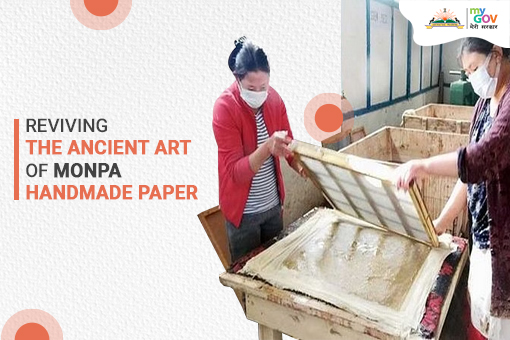5 G I – Tagged Products of Arunachal Pradesh

Geographical indications (GI) are an essential component of IP rights that protect the distinctive characteristics of products associated with particular geographical areas. India, as a World Trade Organisation (WTO) member, enacted the Geographical Indications of Goods Act in 1999 to safeguard these designations, guaranteeing that goods with specific places or regions remain identifiable and conserved. In addition to providing legal protection, GI tags have a significant cultural and economic impact. They improve their marketability, establish their brand, and boost sales and exports. A registered GI is valid for ten years and can be renewed twice for an additional ten years to emphasize the ongoing value of these local materials.
This write-up explores five different products from Arunachal Pradesh that have been granted GI certificates.
1. Arunachal (Wakro) Orange
Registration Number: 375
Application Date: January 27, 2012
Applicant: North Eastern Regional Agricultural Marketing Corporation Limited (NERAMAC), Guwahati
Citrus fruits, especially Arunachal oranges, are a major horticultural crop in the region, accounting for about 90% of total citrus production. Arunachal orange, known for its distinct sweet-sour taste and high juice content, thrives in the unique climatic conditions of the state. These oranges are rich in vitamin C, offering a special taste due to their moderate acidity and high total soluble solids (TSS). They are distinguishable by their orange-colored peel, medium thickness, and round shape.
The uniqueness of Arunachal Orange stems from its specific agro-climatic conditions: loose skin, ease of segment separation, high juice content, high TSS, and medium acidity. These characteristics make it ideal for eating alone or in fruit salads.
2. Arunachal Pradesh Idu Mishmi Textile
Registration Number: 625
Application Date: October 9, 2018
Applicant: Idu Mishmi Cultural and Literary Society (IMCLS), Roing
Arunachal Pradesh’s Idu Mishmi tribal group, which resides in the Mishmi Hills of Dibang Valley and Lower Dibang Valley, weaves handloom items recognised as Idu Mishmi textiles. These fabrics are distinguished by their elaborate geometric designs, which include rhomboid forms, triangles, angles, and lines. With striking hues like Teei (black), Shu (bright red), and Low (white), the Idu Mishmi fabrics are used for a variety of items, including hand purses, shoulder bags, men’s coats, ladies’ shirts, wraparounds, and more. These handloom products are incredibly resilient, eye-catching, and appropriate for any time of year.
Along with their distinctive designs, these textiles are noteworthy for their function in the Idu Mishmi tribe’s social and cultural life. Generations after generation of people have learned how to make thread and weave designs, and the finished goods are worn on a regular basis during rites and festivities. The vibrant hues of Arunachal Pradesh and the inventiveness of the tribal artisans are reflected in the Idu Mishmi textiles, which are fashioned using locally derived fibers taken from nettle plants.
The following products are the latest additions to G.I. certifications from Arunachal Pradesh, which have been recently certified this year (2023).
3. Arunachal Pradesh Khaw Tai (Khamti Rice)
Registration Number: 803
Application Date: December 13, 2021
Applicant: Namsai Organic Spices and Agricultural Producer Company Limited, Namsai
Khaw Tai, a native rice type grown by Khamti tribal farmers in the state’s mid-eastern foothills, exemplifies Arunachal Pradesh’s agricultural diversity. They rely on a variety of water sources to infuse the rice with essential indigenous nutrients. Khaw Tai rice is distinguished by its strong aroma, sweet taste, and white color, and it belongs to Class 31 as a short-grain, bold rice. Its distinct characteristics include shoot and root measures, germination percentages, seed vigour, and nutritional content, all of which contribute to its importance in rice development and breeding.
The cuisine of the Khamti tribes demonstrates how versatile Khaw Tai rice may be used in a range of traditional recipes, showcasing the creative abilities and love of the variety of the indigenous populace. Beyond its use in food, Khaw Tai rice has been historically significant as a source of protection and nutrition during trying times. The consumption of cereal-based drinks such as rice beer, which are ingrained in the socio-cultural legacy of the Namsai people, emphasizes the relationship between food and culture in the area.
4. Arunachal Pradesh Yak Churpi
Registration Number: 809
Application Date: December 28, 2022
Applicant: ICAR National Research Centre, Dirang
Arunachal Pradesh’s West Kameng and Tawang districts are home to a unique breed of yak, cherished by local tribes like the Brokpas and Monpas. Yak milk and its derivatives, such as the naturally fermented milk product Yak Churpi, are critical components of their livelihood and cuisine. Yak Churpi comes in soft and hard varieties, with the latter lasting up to 20 years if properly stored. In addition to its culinary applications, Churpi is a traditional canine snack and an energy-boosting gum for many tribes in Arunachal Pradesh.
Yak Churpi holds both cultural and economic significance in the region, particularly in Tawang and West Kameng districts. It provides a source of protein, serves as a vegetable substitute, and offers probiotic properties through lactic acid bacteria. This product is integral to local dishes, emphasizing its status as a staple condiment rooted in the region’s history and the knowledge passed down through generations.
5. Arunachal Pradesh Tangsa Textile
Registration Number: 810
Application Date: January 4, 2022
Applicant: Nongtham Handloom Cluster Producer Company Limited, Miao
Tangsa textile is a culturally significant traditional skill preserved by the Tangsa tribe in Changlang District, Arunachal Pradesh. Their culture revolves around weaving, which serves as a vehicle for displaying their cultural heritage while also reflecting the distinct designs of various sub-tribes. Weaving is linked to ethnic identity, cultural traditions, and socioeconomic status. Tangsa women, primarily weavers, demonstrate their understanding of the environment through the use of ancient loin looms and organic colors.
Tangsa textiles are highly sought after due to their elaborate designs, use of natural dyes, and intimate ties to the local environment. The practice of this craft, which has been passed down through generations, is taught to girls by their foremothers, demonstrating their commitment to preserving their cultural legacy.
In conclusion, Arunachal Pradesh’s G.I.-tagged products are a way to preserve and promote the region’s distinctiveness in addition to being emblems of its rich legacy and culture. These designations highlight the value of maintaining traditional knowledge and sustainable practices while providing local people with economic prospects and cultural preservation. Additionally, they highlight the communities and customs that give these items their unique qualities, as well as their vital role in the region’s history and culture, as they celebrate Arunachal Pradesh’s rich tapestry.





